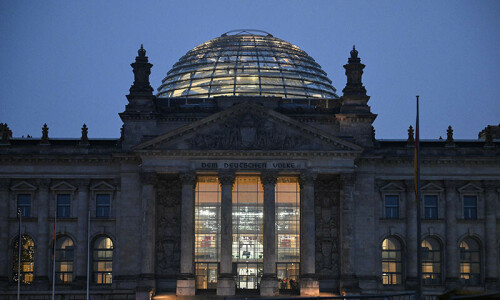PAKISTAN’S retail sector is undergoing a ‘facelift,’ as several business groups are diverting significant investment to construction of modern retail infrastructure to take advantage of changing preferences of urban consumers, who now prefer to shop from superstores, hypermarkets and large malls for convenience and quality.
A population of 180m people with a huge youth bulge, rapid urbanisation and lack of modern retail space are said to be the main factors driving new corporate investments into the organised retail business.
“The retail trade in Pakistan still remains at an early stage of development, dominated by ‘street shopping’. There’s an unlimited space for investment in the organised retail,” notes Ahmed Khan, head of leasing at the Emporium, the country’s largest shopping mall being built in Lahore by the Nishat Group at an estimated cost of Rs10bn. The complex will also have a 123-room hotel with the largest banqueting facility, restaurants, nine-screen cinema complex and play area for children.
“There is a visible change in consumer spending patterns. The new retail formats are replacing the old trend of street shopping. Many factors have contributed to this change: extreme weather, convenience, quality, choice and rising disposable incomes”
The modern retail format — comprising hypermarkets, superstores and malls — represents only a fraction of the total retail trade, encouraging investors to invest their money in this sector. Apart from Nishat, other major business groups investing in the creation of modern retail infrastructure in major cities include Arif Habib, Bismillah Group, Packages and Giga Group.
“There is a visible change in consumer spending patterns. The new retail formats are replacing the old trend of street shopping. We expect a footfall of 40,000-50,000 a day at the Emporium,” Ahmed argues. “Many factors have contributed to the change in the trend: extreme weather, convenience, quality, choice and rising disposable incomes.”
Wholesale and retail trade contributes 18.6 per cent to the gross domestic product and has a 31.9 per cent share in the services sector, according to the Economic Survey of Pakistan 2013-14. It grew by a respectable 5.2 per cent in the last financial year, compared with 3.38 per cent a year before.
Private consumption in Pakistan has increased over the last few years in spite of slow economic growth. The size of the retail market is estimated to be somewhere between Rs3.5 trillion and Rs4 trillion.
Pakistan was identified in 2011 by Deloitte and PlanetRetail as one of the 10 ‘hidden heroes’ in the emerging markets with a huge potential for growth in the retail sector. “…Although the country is poor, if only a small share has discretionary spending power, this represents a ‘sizable’ market for modern retailers,” emphasises the report.
“The Pakistani retail industry is one of the least concentrated in the world. There are few major chains. Low rate of car ownership, home refrigeration, purchasing power and relatively small number of modern retail formats means that most Pakistanis shop daily at small neighbourhood shops,” it notes.
“Overall, the traditional sector accounts for the majority of the country’s retail sales. However, in the long term, as competition increases, modern retail formats will gradually take an increasing share of the market.”
Expansion of modern retail formats in the country is being impeded by numerous factors: price instability, land rates, shortage of space for construction of malls and superstores, logistical costs, high credit rate and policy inconsistency etc. Dr Shahid Zia, a Lahore-based financial analyst, believes that three factors — revival of economic growth, price stability and liberalisation of trade with India — are crucial for pushing investment and growth in the new retail formats.
The consolidation of retail trade in modern formats, according to Ahmed, brings several social and economic advantages to retailers, consumers, and producers and manufacturers.
It helps to improve the quality of the products, eliminates the role of the middleman, increases margins for producers and manufacturers, brings price stability, boosts competition and choice, creates jobs, reduces distribution and logistical costs, enlarges the tax base and the revenue net, and develops supply chains.
He is of the view that the government should encourage investment in this sector by giving incentives to corporate businesses investing money in retailing. He is also not happy with the government’s preference for foreign investment. “Domestic investors can do much more for the economy than foreign investors. Policies should not discriminate against local investment.”
Published in Dawn, Economic & Business, July 28th, 2014














































Dear visitor, the comments section is undergoing an overhaul and will return soon.